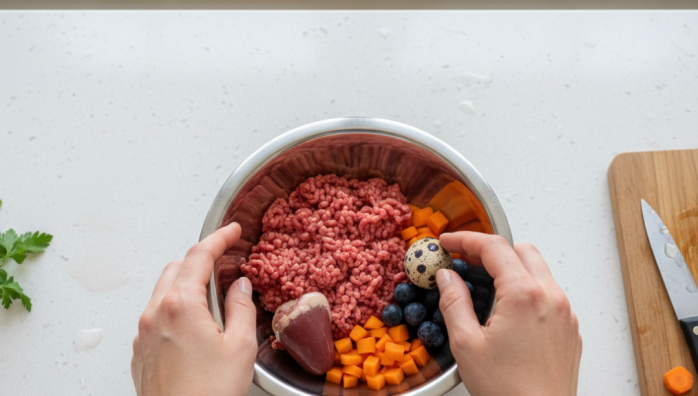Balancing Nutrients in DIY Raw Meals
by admin in Pet Care Basics 17 - Last Update November 23, 2025

When I first ventured into the world of DIY raw feeding, I was both excited and, honestly, a little terrified. The idea of giving my dog a diet closer to what their ancestors ate made so much sense, but the responsibility of getting the nutrient balance right felt immense. I remember staring at a pile of ingredients in my kitchen, completely second-guessing myself. It\'s a journey, and I want to share what I\'ve learned about creating balanced meals from my own trial and error.
The foundational ratios I learned to trust
The concept that really helped me get started was understanding the basic ratios. The general guideline for a BARF (Biologically Appropriate Raw Food) diet, and what I\'ve built my own recipes on, is a framework. It’s not about being perfect to the gram every single day, but about achieving balance over time, usually over a week or so.
The 80/10/10 starting point
This is the classic prey model ratio that many raw feeders, including myself, use as a base. Here’s how I break it down:
- 80% Muscle Meat: This is the foundation. It provides protein, amino acids, and some vitamins. I rotate sources like beef, chicken, turkey, and lamb to provide a variety of nutrient profiles.
- 10% Raw Edible Bone: This was the scariest part for me at first! But it\'s a non-negotiable for calcium and phosphorus. I use things like chicken wings, necks, or feet. The key is that they must be raw (cooked bones are dangerous) and appropriate for your pet\'s size.
- 10% Organ Meat: This is the nutrient-dense powerhouse. At least half of this (so 5% of the total meal) should be liver, which is rich in Vitamin A. For the other 5%, I rotate things like kidney, spleen, or heart.
Common mistakes I made (so you don\'t have to)
I definitely didn\'t get it perfect from the start. One of my biggest early mistakes was thinking \'more bone is better\' for my dog\'s teeth. This led to some serious constipation. Too little bone can cause loose stools. It took me a while to find that sweet spot for my own dog. Another misstep was not including enough organ variety. Just feeding liver is a start, but rotating other secreting organs provides a much wider range of essential nutrients.
Why I still lean on professional guidance
Even after years of doing this, I\'m not a veterinarian or a certified animal nutritionist. My experience is based on my own pets and extensive research. That\'s why I believe it\'s crucial to approach this as a partnership with your vet. When I was starting out, I had a long chat with my holistic vet, who was supportive and helped me review my initial meal plans. It gave me the confidence to know I was on the right track. I always recommend anyone starting this journey to do the same. What works for my dog might need tweaking for yours, and a professional can help you navigate that safely.














